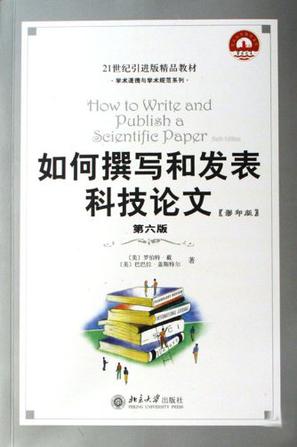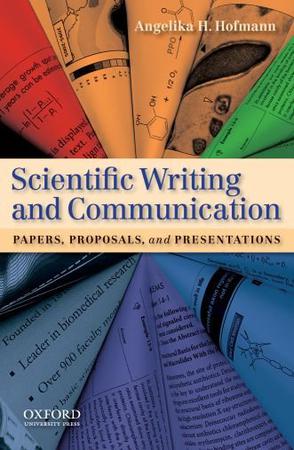欢迎来到相识电子书!
标签:科技论文
-
如何撰写和发表科技论文
《如何撰写和发表科技论文(第6版)(影印版)》于1979年首次出版后不断再版和重印,深受理工科学生和科研人员的欢迎,被全世界上百所大学列为科技写作方面的教科书或参考书。《如何撰写和发表科技论文》旨在帮助理工科学生和科研人员提高科技论文写作能力,使其论文更容易被国际期刊接收和发表。全书分为8编41章,清晰而准确地阐述了科技论文的各个要素、论文投稿和发表过程中应注意的事项、如何进行会议交流、准备会议摘要、口头陈述论文、撰写海报和会议报告以及基金申请书等其他文章的写作,涵盖了科学论文写作和发表的方方面面。对于理科学生和科研工作者具有重要的指导作用。 -
Scientific Writing and Communication
Scientific Writing and Communication: Papers, Proposals, and Presentations covers all the areas of scientific communication that a scientist needs to know and to master to successfully promote his or her research and career. This unique "all-in-one" handbook begins with a discussion of the basics of scientific writing style and composition and then applies these principles to writing research papers, review articles, grant proposals, research statements, and resumes as well as to preparing academic presentations and posters. FEATURES: A practical presentation carefully introduces such basic writing mechanics as word choice and word location, sentence structure, and paragraph organization before moving into manuscript planning and organizational strategies. Extensive hands-on guidance for composing scientific documents and presentations then follows. Relevant and multi-disciplinary examples taken from real research papers and grant proposals by writers ranging from students to Nobel Laureates illustrate clear technical writing as well as common mistakes that one should avoid. Examples are drawn from a broad range of scientific disciplines including medicine, molecular biology, biochemistry, ecology, geology, chemistry, engineering, and physics. Extensive end-of-chapter exercise sets provide the opportunity to review style and composition principles and encourage readers to apply them to their own writing. Writing guidelines and revision checklists warn scientists against common pitfalls and equip them with the most successful techniques to revise a scientific paper, review article, or grant proposal. Annotated text passages bring the writing principles and guidelines to life by applying them to real-world, relevant, and multidisciplinary examples. Clear, easy-to-follow writing style is understandable to both native and non-native English speakers; special ESL features address problems faced by non-native English speakers. Eight chapters on grant writing demonstrate how to write successful grant applications and how to avoid the most common application mistakes. Covering all the facets of communication that scientists need to master, Scientific Writing and Communication: Papers, Proposals, and Presentations is ideal for a wide range of readers--from upper-level undergraduates and graduate students to postdoctoral fellows, faculty, and professional researchers--in the life sciences, medicine, psychology, chemistry, and engineering.
热门标签
下载排行榜
- 1 梦的解析:最佳译本
- 2 李鸿章全传
- 3 淡定的智慧
- 4 心理操控术
- 5 哈佛口才课
- 6 俗世奇人
- 7 日瓦戈医生
- 8 笑死你的逻辑学
- 9 历史老师没教过的历史
- 10 1分钟和陌生人成为朋友


